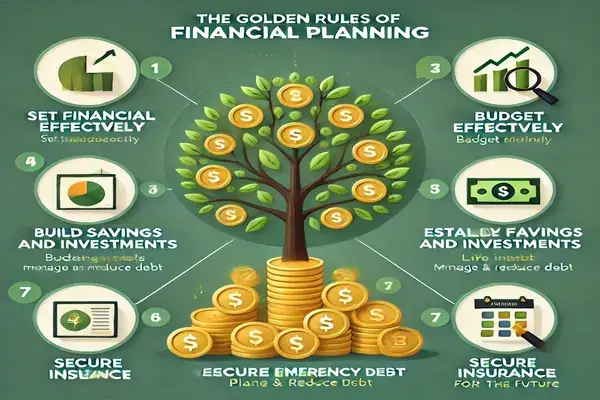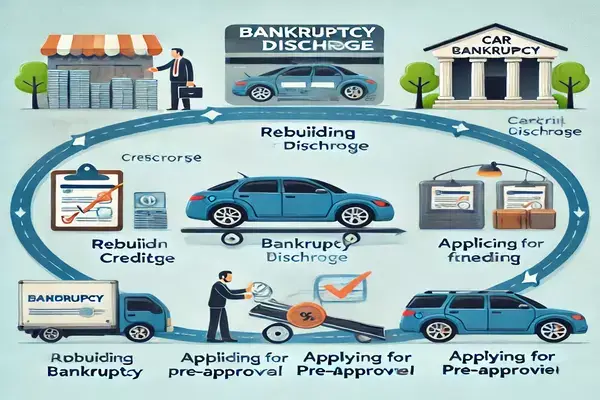
What Are the 5 Steps of Financial Planning?
Anyone must make a great financial plan to achieve a sustainable financial status. Whether it be retirement, home buying, or coaching your children’s education, it is crucial to have a system. In this guide, we will unpack this and answer the question on everyone’s lips: What are the 5 steps of financial planning? We’ll also share with you some practical action steps you can incorporate that could be used as a framework to build your financial plan that serves you, and your goals.
Key Takeaways:
- At its essence, financial planning can be distilled into 5 simple, actionable steps: three actions that guide you through setting, tracking, and accomplishing your financial goals.
- A good financial plan will help you achieve financially both in the short and long run.
- Financial planning tools (such as budgeting applications) and financial advisors can help streamline this process.
Step 1: Evaluate Your Current Financial Situation
The most important step in financial planning is understanding your financial baseline. You can never arrive at a destination if you do not know exactly where you are.
Key Actions to Take:
- Net worth: This is the line where you’ll subtract your liabilities (your debt, say) from your assets (your savings, investments, property, etc.).
- Map your cash from month to month by means of inflow and outflow: This will either be a basic budgeting device or a spreadsheet to map how your finances are looking.
- The debts they have — credit cards, maybe student loans, maybe a mortgage (so much to take on but possible).
Example Table: Net Worth Assessment
| Category | Value |
|---|---|
| Savings | $20,000 |
| Investments | $50,000 |
| Real Estate | $150,000 |
| Total Assets | $220,000 |
| Liabilities (Debts) | -$80,000 |
| Net Worth | $140,000 |
Step 2: Define Financial Goals
Your data trained till 2023 October. The next part of this puzzle in mastering your time is where you’re setting the goals. They must be SMART (Specific, Measurable, Attainable, Relevant, and Time-Bound) goals. I encourage you to read more about this blog here: How People with No Money Pay for Attorneys: Affordable Legal Solutions
Types of Financial Goals:
Short term: Pay off $5,000 in credit card debt over the next year.
Less than half a decade: Put away $30,000 for a home deposit within five years.
Long term: Have $1 million in retirement savings by age 60.
Pro Tips for Setting Goals:
Pay down debt — especially if you see high-interest rates.
Decompose high-level goals into low-level milestones.
Step 3: Develop a Financial Plan
After you have goals, it is then time to make a plan that makes those goals real, by way of practical items such as budgeting, saving, and investing. This is where you allocate resources to reach your objectives.
Building a Budget:
Use the 50/30/20 rule:
50% for essentials (housing, food, utilities).
30% for discretionary expenses.
20% for savings and debt repayment.
Automate savings to ensure consistent contributions.
Investment Strategies:
Consider your risk tolerance and investment horizon:
Low-risk options: Bonds, CDs, or index funds for short-term goals.
High-risk options: Stocks or real estate for long-term growth.
Step 4: Implement Your Plan
A plan is as good as its execution. Begin taking action to implement your financial roadmap.
Implementation Tips:
Open accounts you may need to (retirement account, brokerage account, etc.).
Focus on high-interest debts first.
Point 4: Schedule regular check-ins to keep on track.
Tools to Use:
Financial Apps: Mint, YNAB (You Need A Budget).
Investment by Platforms: Vanguard, Robinhood, Fidelity.
Step 5: Monitor and Adjust Your Plan
Financial planning is an ongoing process. Life, the market, and costly surprises may compel you to modify your plan.
Key Monitoring Activities:
Review monthly cash flow reports.
Rebalance your investment portfolio annually.
Update goals as milestones are achieved or priorities shift.
Expert Insight:
Successful financial planning is about staying adaptable. Plans evolve, but consistent monitoring ensures you’re always moving closer to your goal – John Smith, Certified Financial Planner (CFP)
Visual Aids:
- Step-by-Step Infographic: A flowchart illustrating the 5 steps of financial planning.
- Savings vs. Expenses Pie Chart: Showcasing a sample monthly budget.
- Retirement Growth Projection: A line graph comparing saving early vs. late.
- Debt Repayment Strategy: Visual comparison of snowball vs. avalanche methods.
Conclusion
Financial planning is not merely about managing money — it’s about constructing your desired way of life. Through these five steps of financial planning — learn to take charge of your finances and begin the road to accomplishing your dreams.
FAQs About What Are the 5 Steps of Financial Planning
So why the hell do we need financial planning?
A financial plan is something which will allow you to create wealth, protect you against risks, and provide for old age financial security.
How do I begin financial planning?
There are several tools that use a similar concept with names such as Mint, Betterment, and Personal Capital.
When is a good time to review my financial plan?
Quarterly and triggering life cycle events (marriage, career changes) is best.
What are the biggest financial planning mistakes?
Examples include failing to plan for emergencies, underestimating costs, and not factoring in inflation.
Do I need to employ the services of a financial advisor?
A financial adviser or planner can give customized advice and expertise if your finances are complex.
Learn More About What Are the 5 Steps of Financial Planning from makebetterfinance






